We interrupt our series on plotting to bring you notes from The Book Academy, a conference I attended last week. We’ll pick up with plotting—including a guest post—later this week!
In a lot of ways you’re already doing the right things, but a little extra polish can make a big difference.
Sometimes you find slush pile gems—her company found Jason Wright in the slush pile (and he became a NYT bestseller). Everybody’s a first time author at some point in his/her career.
5 things you can’t control about submitting your MS
- Publishing is a business. We need a book that will sell.
- How many other MSs submitted in a given year.
- How many slots the publisher has available for new writers.
- Other MSs submitted that are like yours [oh the agony]
- Editor’s mood—they have bad days, too. It’s not personal.
Writing is a personal expression—you have a story that’s in you and you’re writing it down.
Buying books is an emotional decision, based heavily on the cover and back cover copy. Editors are the same when they buy books for their companies—cover letter = cover copy. Cover letter might be most important page in whole submission—give them an emotional investment in what we have to say.
 Her employer, Deseret Book, gets a good amount of submissions—last year, the received 1700 manuscripts. They published 12 of those from the slush pile. Odds don’t sound good—but of those 1700, they only seriously considered 100-150. Others: wrong place, copy cats, not very good. [For you not-so-math-whizzes, they published <1% of the slush pile, but at most 9% of the slush pile was even publishable. Of the publishable works, they published 8-12%.)
Her employer, Deseret Book, gets a good amount of submissions—last year, the received 1700 manuscripts. They published 12 of those from the slush pile. Odds don’t sound good—but of those 1700, they only seriously considered 100-150. Others: wrong place, copy cats, not very good. [For you not-so-math-whizzes, they published <1% of the slush pile, but at most 9% of the slush pile was even publishable. Of the publishable works, they published 8-12%.)
Deseret Book does, on average, 150-160 products a year—books (fiction, nonfiction, adult/ya/kids), audio, music, backlist reprints. Every year, they want Christmas books, mysteries, picture books—the door is always open, try again next year. (Right now they’re slotting for Late Summer 2010-Early 2011).
Why do they reject MSs? It’s not personal—there are plenty of other reasons. For example, a phenomenon she calls “There’s something in the water”—manuscript submission trends—they once received 4 commentaries on Revelations in the same month. They could only publish one, so while all four were good, they had to pick the best one and reject the other three.
Usually by the time a trend is IDed, it’s waning (b/c they work so far in advance). Don’t be the next Dan Brown/Stephenie Meyer—be the first you. Start the trend. That does mean taking a risk for the publisher (is this new b/c people aren’t buying it or b/c it just hasn’t been done before?)
5 things you CAN control about submitting your MS to make a BIG difference:
- Do your homework
- Follow guidelines
- Write a killer cover letter
- Show case your talent
- Deal with rejection letters
Yes, there is homework—this isn’t just a glamorous lifestyle, LOL. Here’s your assignment:
Six Q you should ask about your own MS/submissions before sending out:
- Am I even in the right slush pile? Sending it to the publisher where it will have the best chance to shine?
- Who’s going to buy my book? Audience in mind as writing—YA fiction, mystery, w/e—help by presenting market in cover letter (NOT 8-80 year olds)
- How is your book different? Not “just like” X or “the next” Y—how is it different, better? Use touchstones as shorthand. Be clear about what’s special about your book. What is it about your book that will make it so your book will rise to the top of the charts? Why will they BUY it?
- What are people buying? Know what the market is doing, but don’t follow/copy it—knife edge. Know what the trends are and what people are buying and how much people are buying. Right now, how many people have disposable income to buy books? (Paperbacks, digital, etc.)
- What is your marketing plan? Get the book off the shelf and into someone’s hand and money in the register. The publisher might not have a large marketing budget for your book—how will you get the word out to get your book sold? Know where your connections are, who you can talk to, who you can bring on board.
- Have I let 5 honest people give me feedback? Is your Mom really going to say that she hated it? If so, then you can have confidence that you’ll jump to the front of the line, having gotten rid of many mistakes.
It’s so much easier if she doesn’t have to work to read it—she’s more likely to read it! Guidelines are there for a reason—know if your MS is in the right slush pile, how not to put editor in a bad mood, to whom you should direct the MS, idea of the wait, how that company works—free cheat sheet or “get out of jail free cards.”
The first impression in hard copy submission (which they prefer) is the envelope. Include complete name and address including ZIP code (don’t make her work to find you!!). Did the author use the right size envelope or is it jammed in there, and duct taped up to hold it together? Have you included the correct size SASE? Always nice to at least include a letter size (size 10) envelope. Most publishers don’t write comments on your MS, so you can ask for it back if you include an-appropriate size envelope. Immediate, easy way to get back in touch with you.
Most important page in your submission package:
THE COVER LETTER
Publishers/editors will make a decision on a cover letter the same way you make a decision on back cover
- Business letter
- Not too intimate
- Simple
- Formal
- Professional
- Representing a product as a business
- Tell me who you are (complete contact information)
- Tell me what you’re selling—write your very own back cover blurb—make me buy your book!
- A good MS deserves a good title. Most publishers will change your title, so don’t stress too much over it, but a kind of dumb title is better than UNTITLED. Titles can change, but having something makes it easier for them to talk about it, ID it in the office.
- Back cover blurb—can you sum up your book in one sentence? What’s your tag line? What’s your log line?
- Why should we buy it? Why should we do business with you? Are you famous? Have you written a really great book? Is it a book we’ve never seen before? Does it fill a niche? Why out of all the books we’ve seen should we pick yours?—short bio, what writing awards you’ve won, how serious you are about your craft, not a one-book person. Can we establish you as a brand and give you a guaranteed slot in the future—do you have more than one book in you, are you a professional, do you meet commitments/deadlines?
- Elusive—the “it” factor. You’ve acknowledged the things you can’t control, you’ve done all you can and you still get rejected. Sometimes there’s no good explanation—it’s just people on the other side of the desk. It’s subjective.
- When it comes back, make revisions, keep it alive, don’t take it personally, keep sending it out.
Your most important sentence in your manuscript is the first one! Its only job is to make me read the next sentence—if the next sent is really good, I’ll read the whole paragraph, etc., etc.—we don’t read “until it gets good.” EX of Kay Lynn Mangum—she sent in a 600 page book, which was shelved. A few weeks later, Lisa had some free time at work and she picked it up—and pretty much fell right into that world. But they cut book by 50% and then it got published.
It’s okay to follow up to ask for a status report once you’ve waited the prescribed time in the guidelines. (DB = 6-8 weeks) Then it’s okay to call. Caveat: there’s nobody easier to say no to than a high-maintenance author. Don’t call daily. Don’t call the day you submit. Often in publishing, no news is good news. Unless they’re a huge publisher. 😉 Their guidelines should say that, though. If they’re taking time, they’re talking to sales and calendaring and marketing and and and.
What should you do while waiting? Write another book. Revise. Send it to someone else. Keep working on something—they might ask if you have anything else ready—bump to head of the line for guaranteed spots!
Questions
Are most publishers okay with simultaneous submissions?
Most people are. Guidelines will say so. Guidelines should be on publishers’ websites.
Illustrations—are they a plus/minus?
Few are author/illustrators—if you do both well, send them in. If not, usually it’s not the author’s responsibility to find an illustrator. Publisher finds professional, awesome illustrator to go with it. The author should have a vote on illustrations.
How do you discover the trends?
Go to the bookstore, come to writers’ conferences, follow Publishers’ Weekly, industry magazines. To be first, see what’s not on the shelf. How do you find out where all the publishing houses are? Writers Market. Local library, reference section. Or WritersMarket.com subscription, up-to-date. Pulse on what’s going on.
What’s the first thing you look at besides cover letter?
The plot. Is it interesting? An original take? She’s more forgiving on fiction b/c it’s harder to evaluate character development in just paragraph or two. Fiction = decision on content. Nonfiction = decision on topic [and platform]. Strong characters, clear voice, interesting situations, believable dialogue.
Her final thing: What do you do? What can you do? A quotation she saw at Disneyland (a friend of Disney’s encouraging him on building the theme park) seemed to answer these questions perfectly—don’t worry, don’t hurry, don’t stop.
Don’t worry if it’s not very good, don’t worry if it’s taking a long time. Don’t worry if you get lots of rejections. Don’t hurry your craft. Take your time. Make it the best you can. Don’t worry if you make a mistake. Don’t worry. Keep writing. Keep submitting. There will always be a need for books, new writers, new ideas, new voices. I wouldn’t have a job if you guys didn’t do your work. I want to read what you’re writing because you’re writing new and interesting things.
About the presenter
Lisa Mangum is an Assistant Editor at Deseret Book, which she admits is a little different than the NY publishers. She’s been in publishing for twelve years, and most of that time, she was in charge of sorting, maintaining and taming the slush pile. This spring, her first novel, The Hourglass Door (my review) was released by Shadow Mountain books, an imprint of Deseret Book. As per conference guidelines, I obtained written consent from Lisa to blog the content of her presentation.
What do you think? Are there any “tricks” to getting out of the slush pile? What weird guidelines have you come across?
Photo credit: Richard Dudley
 However, sometimes I’ve been disappointed by the Hero’s Journey as a plotting method—when I expect to look at a list of steps and magically have the list tell me exactly how I should handle each of those scenes. That’s not really what it’s for—we still have to use our imagination.
However, sometimes I’ve been disappointed by the Hero’s Journey as a plotting method—when I expect to look at a list of steps and magically have the list tell me exactly how I should handle each of those scenes. That’s not really what it’s for—we still have to use our imagination.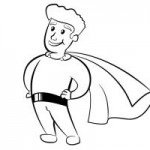 course of the story, and is involved in most of the action. He has a character flaw, of course (if he were
course of the story, and is involved in most of the action. He has a character flaw, of course (if he were  Along the way, the Hero encounters Threshold Guardians who block his path. These obstacles are tests for the Hero—have his skills developed enough? The guardians may be working for the good side or the bad side, or no one at all (but it’s hard to make someone who makes trouble for his own sake believable for very long, you know?)
Along the way, the Hero encounters Threshold Guardians who block his path. These obstacles are tests for the Hero—have his skills developed enough? The guardians may be working for the good side or the bad side, or no one at all (but it’s hard to make someone who makes trouble for his own sake believable for very long, you know?) Another strength is that you can start with almost nothing and “grow” a plot “naturally.” If you start with just the most basic idea—say, National Treasure for the Amish or something ;)—you can develop your characters and your plot.
Another strength is that you can start with almost nothing and “grow” a plot “naturally.” If you start with just the most basic idea—say, National Treasure for the Amish or something ;)—you can develop your characters and your plot. And I can say this from experience. Yes, while I am
And I can say this from experience. Yes, while I am 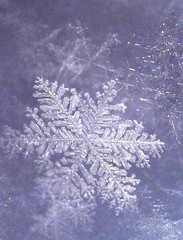
 In step four, we come back to our plot summary and expand each sentence from that paragraph into a paragraph of its own, making the summary roughly a page, too.
In step four, we come back to our plot summary and expand each sentence from that paragraph into a paragraph of its own, making the summary roughly a page, too.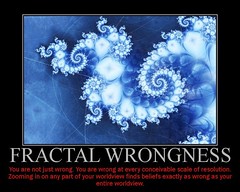

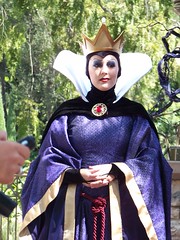
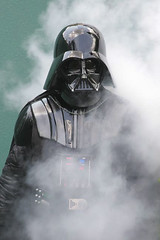

 Her employer, Deseret Book, gets a good amount of submissions—last year, the received 1700 manuscripts. They published 12 of those from the slush pile. Odds don’t sound good—but of those 1700, they only seriously considered 100-150. Others: wrong place, copy cats, not very good. [For you not-so-math-whizzes, they published <1% of the slush pile, but at most 9% of the slush pile was even publishable. Of the publishable works, they published 8-12%.)
Her employer, Deseret Book, gets a good amount of submissions—last year, the received 1700 manuscripts. They published 12 of those from the slush pile. Odds don’t sound good—but of those 1700, they only seriously considered 100-150. Others: wrong place, copy cats, not very good. [For you not-so-math-whizzes, they published <1% of the slush pile, but at most 9% of the slush pile was even publishable. Of the publishable works, they published 8-12%.)

